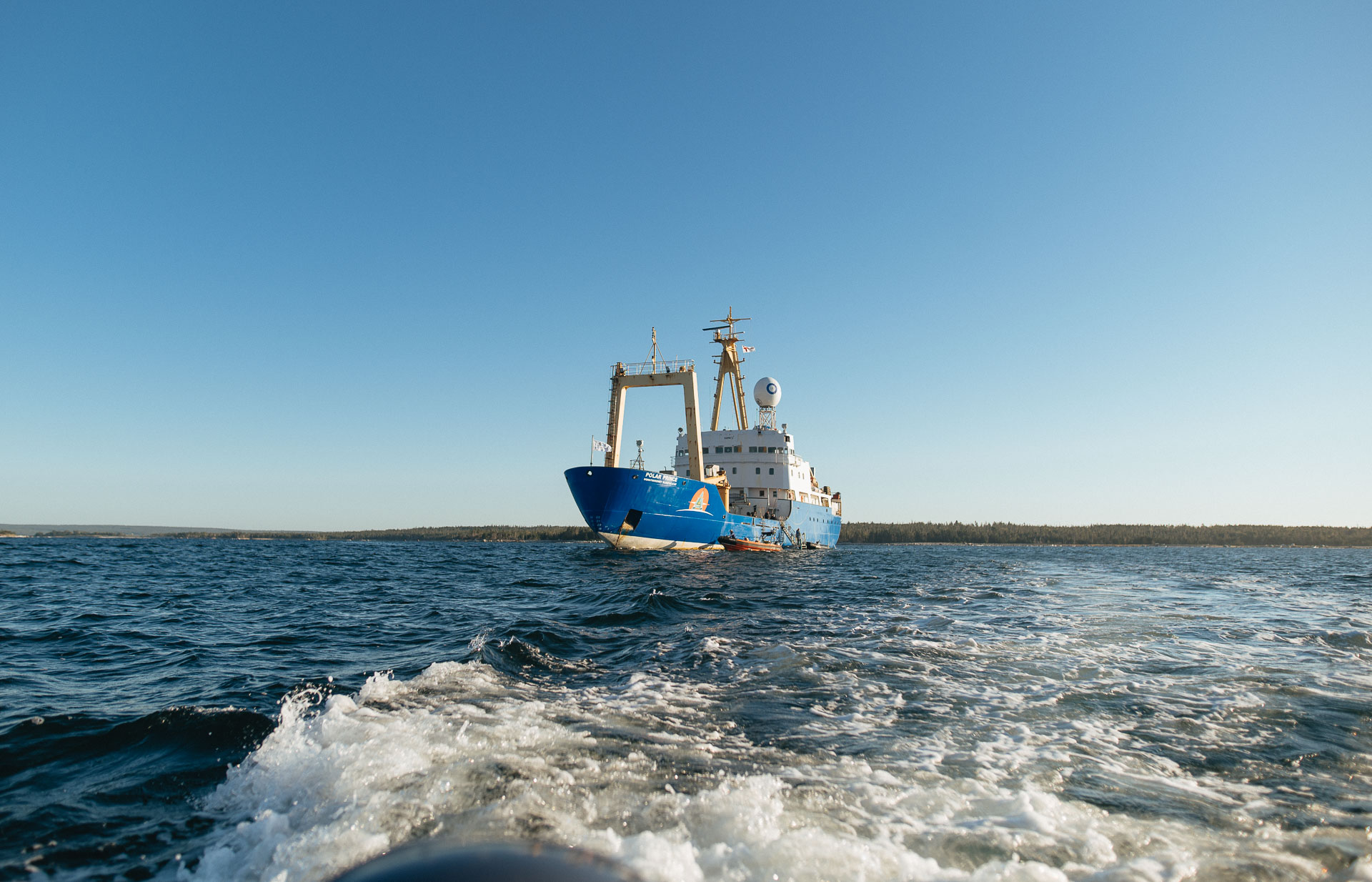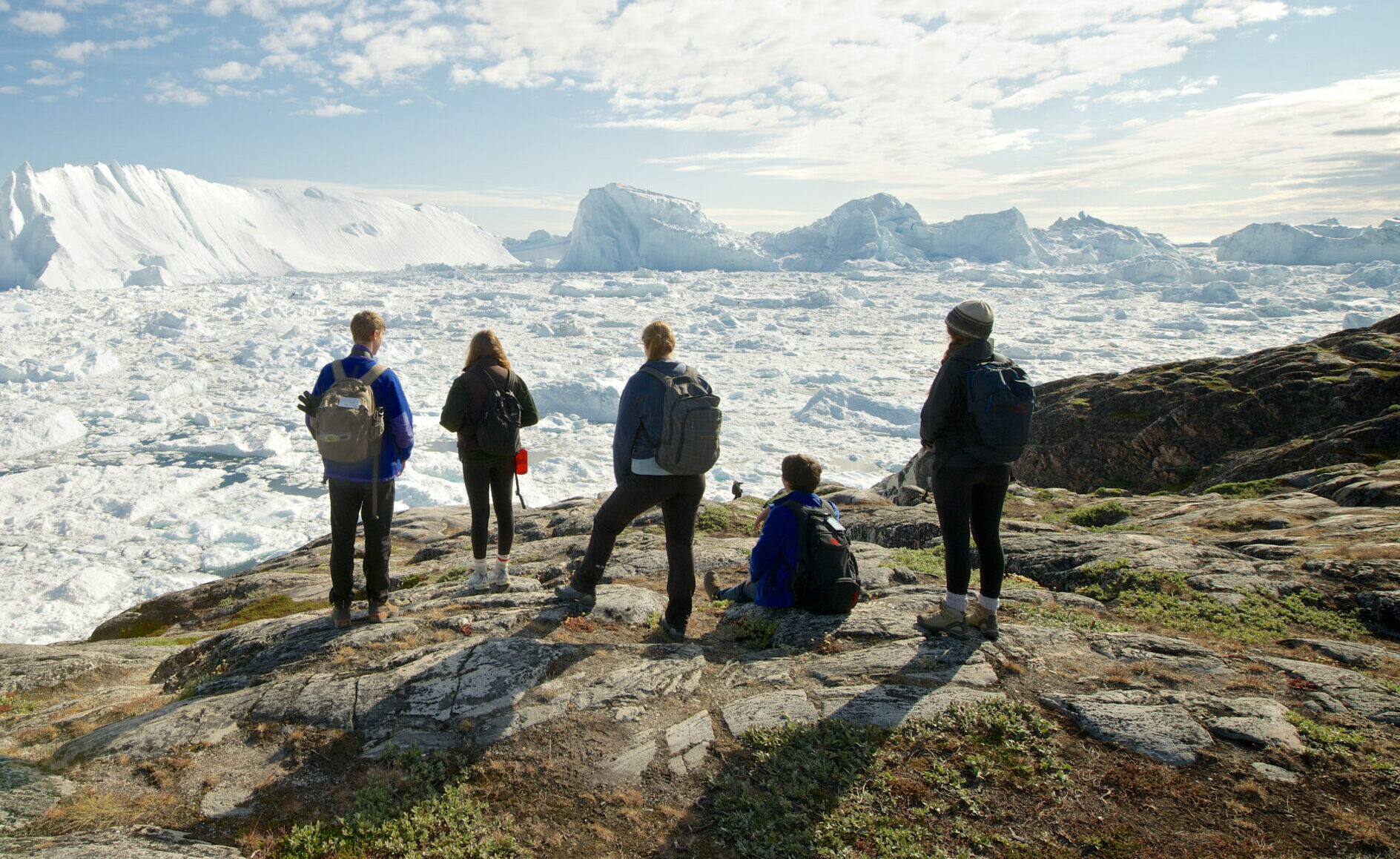Ocean Conservation Expedition: September 21-23
After saying goodbye to some participants and picking up new ones in Digby on Wednesday, we set our sights on Brier Island.
The weather, while overcast and a bit foggy early on, cooperated as we got into our scheduled programming. This included getting our dive team into the water for the first time on our expedition!
Claire Goodwin, a research scientist at Huntsman Marine Science Centre in St. Andrews, New Brunswick, and Millie Mannering, an Australasian scholar with Our World Underwater Scholarship Society, tumbled over the side of a zodiac for two dives that day – one in a horse mussel site and the other in a seagrass site at the north end of the Island. They saw plenty of the large mussels, lobsters, and were met with a lush grass bed.

They’re collecting marine invertebrate species (snails, starfish, worms, sponges) so they can identify and sequence them to get a bit of their genetic material, known as a barcode. These are really short fragments of DNA that are unique to each species, and can be used to identify them without using traditional taxonomy. If the barcode is already in a database, you know the species has been in the area before.
Claire’s project is trying to populate databases like the Barcode of Life so that they’re more complete. The work is funded under a Fisheries and Oceans Canada program to create tools for monitoring marine protected areas. This could potentially help scientists use eDNA as a tool to monitor marine protected areas in the future.
Being on board the Polar Prince has definitely made her collection work easier.
“It is great, actually. We’ve been able to visit habitats across the Bay of Fundy and up the Nova Scotia coast. You’re normally land-based on an expedition, so while we can go to quite a few sites within an area, you wouldn’t normally be going to lots of different places like we are on this ship. So, it’s brilliant for this project.” – Claire Goodwin
While Claire and Millie were collecting ocean critters off the coast, the rest of our group went ashore on Brier Island where we were met by Nick Hill of the Southwest Nova Biosphere Reserve Association. This area is home to the rarest plant in Canada – the eastern mountain aven. This little wildflower only grows in one other place in the world – the White Mountains of New Hampshire – but 95% of it is here. Nick’s group is trying to expand that. The Nature Conservancy of Canada established the 1,200-acre Brier Island Nature Preserve in 1988 in part to protect this plant. Since 2012 the NCC, working with concerned residents like Nick, have also been part of a project to reverse habitat degradation and restore habitat for the aven. In the 1950s landowners created ditches to try and drain a bog in the area to use it for agriculture. As a result, nesting gulls set up a colony – one of the largest in the province – which has created problems for the ecosystem.
As we hiked through the bog to see this rare plant first-hand, we were rewarded with a beautiful view. We then made our way through the mud and over rocks along the shore towards the lighthouse.
After a full day of research and exploration we returned to the Polar Prince. The following day we were off to Seal Island.
Despite some inclement weather heading towards Nova Scotia, we were greeted with beautiful skies and Lynn – she’s one of two residents currently on the island and a character full of wit and stories. The crew of the Polar Prince also brought food supplies ashore to help get them through the approaching storm.
While some of us set off to explore the island, including the lighthouse and dog cemetery, the rest set off along the beach. Our destination was a pond where Doug Hynes, of the Canadian Wildlife Service (CWS), and Ada Alvarez-Manzaneda Salcedo, from Queen’s University, gathered core samples from the boggy bottom. Doug also retrieved several acoustic recording devices that had been left on the island.

That afternoon back on the ship, Doug did a presentation about the CWS’ monitoring of protected areas in the Atlantic region. Given Canada’s commitment to protect 30% of its ocean by 2030, the CWS has identified areas for potential protection.
In many cases there’s a lack of baseline data available about what species are on these sites and where. While there are snippets here and there, some of it outdated and in other cases, it just doesn’t exist. That’s what Doug’s research is working to determine.
“This will all help inform decisions about how much priority we want to give to a given place. It’s almost like a triage. Are there any really hot spots with lots of good diversity?” – Doug Hynes
Whether or not humans are present in an area is also a consideration, as people have the potential to introduce other complexities. Doug is using eDNA sampling as a way to characterize what’s there quickly. “Just in a couple of hours you can take water, send it to the lab, get them to analyze the DNA and get a species list of what’s there. We can do this all with a few samples,” he says.
By recording audio of wildlife in the area, the listening devices he retrieved also help identify what species are calling it home. The core samples from the pond help paint a picture of how the habitat might have changed over the years. “These are three or four tools we can quickly deploy and install in the environment to collect this data about what is living there and where. What species and where. We can do this pretty quickly, all with a few samples.”
We also heard from Gabrielle Beaulieu, a senior advisor in marine conservation with Parks Canada, about the agency’s 10-year effort to deal with invasive European green crab, which took root in the area after being transported here in ship ballast water. They’re small but they became a big problem. Their presence coincides with a 98% loss of eelgrass in the estuaries at Kejimkujik Seaside. That’s concerning given that eelgrass is a keystone species across the coast that provides nursery habitat for almost every commercial species that we like to consume. Juvenile soft-shell clams, which are green crabs’ prey of choice, were also essentially non-existent in the area in 2009.

From 2009 to 2019, while working with local fisherman, partners, and students to trap green crabs using rowboats, Parks Canada saw more than 2 million crabs removed. In that time, 36% of eelgrass beds returned, as did juvenile clams.
“Parks Canada did a really good job of demonstrating in a semi-closed system – an estuary – with quite a bit of effort we can actually influence how an invasive species impacts those places. The goal wasn’t to eradicate them; it was to slow down the impacts so that the native species had time to adapt. And we did. It was pretty fantastic.” – Gabrielle Beaulieu – Senior Advisor, Marine Conservation, Parks Canada
After an educational evening in the hanger, we headed to our cabins, anxious to see what the forecast would bring. That night the winds and swell came up more than expected. Our scheduled research would have to wait as Capt. Gilles decided the safest thing to do was head into a harbour and wait out the storm.
In the morning we awoke in the calmer waters of Shelburne harbour. Knowing that we may be hunkered down here for a while, the dive team took advantage of the conditions and headed out for one last dive. The rest of our team boarded the zodiacs, and made our way into town. As we explored the harbour we gathered some essential supplies (storm chips) and made our way back to the ship before it got too rocky.
We waited out the storm from the safety of the Polar Prince, anchored securely in Shelburne harbour. Before we knew it, Capt. Gilles decided it was safe to return to sea, and carry on with our expedition!
Let the learning continue!





